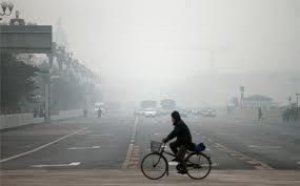
All iLive content is medically reviewed or fact checked to ensure as much factual accuracy as possible.
We have strict sourcing guidelines and only link to reputable media sites, academic research institutions and, whenever possible, medically peer reviewed studies. Note that the numbers in parentheses ([1], [2], etc.) are clickable links to these studies.
If you feel that any of our content is inaccurate, out-of-date, or otherwise questionable, please select it and press Ctrl + Enter.
Authorities have begun releasing data on air pollution in the Chinese capital
Last reviewed: 01.07.2025

Beijing authorities have begun publishing detailed data on air pollution in the Chinese capital.
This is a response to numerous doubts about the completeness and veracity of the officially published information of the Beijing meteorological service, which has caused complaints from many Beijing residents.
Previously, the Chinese capital only published data on the level of air pollution by particles larger than 10 microns in diameter, the so-called PM10 indicator.
However, on Saturday, the website of the Beijing Municipal Environmental Monitoring Center posted the PM2.5 indicator, which reflects air pollution by suspended particles with a diameter of 2.5 to 10 microns.
These much smaller particles can penetrate into the bronchi and lungs and are a more objective criterion for assessing the degree of air pollution.
Last year, a public campaign for reform of the meteorological observation system in Beijing was launched, gaining widespread support thanks to the Internet.
The US Embassy in Beijing tweets hourly PM2.5 readings, and its overall weather forecasts for the capital sometimes differ greatly from the official Chinese ones.
Health hazard
Now, the Beijing Municipal Environmental Monitoring Center has begun publishing hourly weather data on its website, including PM2.5 levels.
As observers point out, air pollution in Beijing has long been a concern for the population and has caused considerable problems for the authorities, including a loss of public trust.
Beijing residents are increasingly demanding more detailed information about the level of air pollution and its impact on their health.
Beijing is located on a plain surrounded by mountains on three sides, which leads to frequent smog in the city, which is also choked by vehicle exhaust fumes.
China's Xinhua News Agency quotes Yu Jianhua, an employee of the Environmental Protection Bureau, as saying that city authorities have been actively fighting to reduce air pollution levels to 100 micrograms of PM10 particles per cubic meter over the past 10 years, which is the national standard in China.
However, over the past year, PM10 levels in the Chinese capital averaged 120 micrograms per cubic metre.
